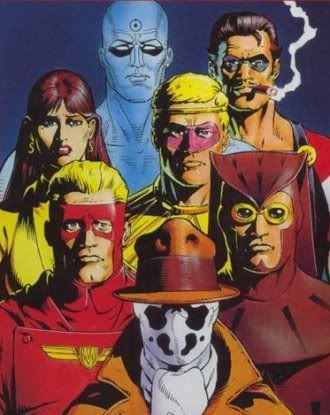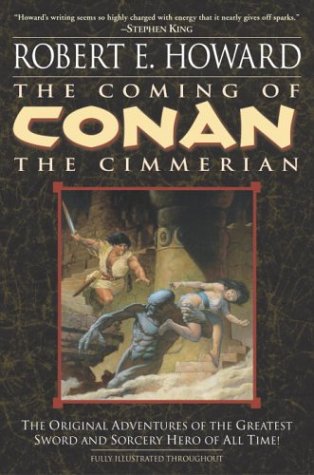5 Questions About: Vietnam
Cracked Back Book Reviews: June 2008
10 Things John Wayne Would Never Do
5 Questions About: Generation Y
The 10 Greatest Drunks in Cinema History
Signs That the U.S. is Rome
How Hollywood Ruined an Epic Poem
5 Questions About: Linda Strawberry
Is Indiana Jones a Misogynist?
Literary Criticism
Fantastically Bad Cinema
Essays
Under God's Right Arm
June 2006
July 2006
August 2006
September 2006
October 2006
November 2006
December 2006
January 2007
February 2007
March 2007
April 2007
May 2007
June 2007
July 2007
August 2007
September 2007
October 2007
November 2007
December 2007
January 2008
February 2008
March 2008
April 2008
May 2008
June 2008
July 2008
August 2008
September 2008
October 2008
November 2008
December 2008
January 2009
February 2009
March 2009
Alcoholic Poet
Baby Got Books
Beaman's World
BiblioAddict
Biblio Brat
Bill Crider's Pop Cultural Magazine
The Bleeding Tree
Blog Cabins: Movie Reviews
A Book Blogger's Diary
BookClover
Bookgasm
Bookgirl's Nightstand
Books I Done Read
Book Stack
The Book Trib
Cold Hard Football Facts
Creator of Circumstance
D-Movie Critic
The Dark Phantom Review
The Dark Sublime
Darque Reviews
Dave's Movie Reviews
Dane of War
David H. Schleicher
Devourer of Books
A Dribble of Ink
The Drunken Severed Head
Editorial Ass
Emerging Emma
Enter the Octopus
Fatally Yours
Flickhead
The Genre Files
The Gravel Pit
Gravetapping
Hello! Yoshi
HighTalk
Highway 62
The Horrors Of It All
In No Particular Order
It's A Blog Eat Blog World
Killer Kittens From Beyond the Grave
The Lair of the Evil DM
Loose Leafs From a Commonplace
Lost in the Frame
Little Black Duck
Madam Miaow Says
McSweeney's
Metaxucafe
Mike Snider on Poetry
The Millions
Moon in the Gutter
New Movie Cynics Reviews
Naked Without Books
A Newbie's Guide to Publishing
New & Improved Ed Gorman
9 to 5 Poet
No Smoking in the Skull Cave
Orpheus Sings the Guitar Electric
Polly Frost's Blog
Pop Sensation
Raincoaster
R.A. Salvatore
Reading is My Superpower
Richard Gibson
SciFi Chick
She Is Too Fond Of Books
The Short Review
Small Crimes
So Many Books
The Soulless Machine Review
Sunset Gun
That Shakesperherian Rag
Thorne's World
The Toasted Scrimitar
This Distracted Globe
Tomb It May Concern
2 Blowhards
Under God's Right Arm
A Variety of Words
The Vault of Horrr
Ward 6
When the Dead Walk the Earth
The World in the Satin Bag
Zoe's Fantasy
Zombo's Closet of Horror
Bookaholic Blogring
Power By Ringsurf
Revisiting the Breakthrough Graphic Novel 22 Years Later
 Writer Alan Moore created “Watchmen” in 1986 because he wanted to push the comic book beyond adolescence into what he called “a superhero Moby Dick.” The 12 edition comic book series – and later the compilation graphic novel – went on to win the Hugo Award and to be named one of TIME magazine’s 100 Best Novels since 1923.
Writer Alan Moore created “Watchmen” in 1986 because he wanted to push the comic book beyond adolescence into what he called “a superhero Moby Dick.” The 12 edition comic book series – and later the compilation graphic novel – went on to win the Hugo Award and to be named one of TIME magazine’s 100 Best Novels since 1923.
There is little doubt that “Watchmen” blazed a new path for comics – especially superhero comics. But did it really have the impact of Art Spiegelman’s “Maus,” which was first published in 1973 or even Gil Kane and Archie Goodwin’s “Blackmark” (1971), arguably the first “graphic novel” published in the
And did
First let’s explore the narrative. “Watchmen” is a dark story. It captures the pre-apocalyptic fears of modern American and Western Europe in the mid-to-late 1980s as the Cold War rhetoric between the Soviet Union and
The story centers on a group of masked adventurers in an alternative universe to our own 1980s (one in which Nixon remains president). The “superheroes” are, in fact, regular human beings with no real powers – other than extraordinary physical conditioning and mental acumen. Doctor Manhattan is only character with superhuman skills as a result of a scientific experiment gone wrong.
The novel opens with the murder of the Comedian (Edward Blake), one of the costumed avengers affiliated with the CIA and other secret government agencies. Rorschach, a second costumed hero, who refused to give up his vigilante lifestyle even after the
Through the investigation, the novel enters the lives of the various costumed heroes: Nite Owl (a first and a second version), Ozymandias, Captain Metropolis, Silk Spectre (first a mother, then her daughter), Doctor Manhattan, the Comedian, and Rorschach. The characters are all flawed – some of them grossly so. The Comedian, for example, is a misogynist and rapist and Rorschach is a sociopath.
and Rorschach is a sociopath.
Rorschach thinks he has uncovered a plot to murder all of the costumed adventurers and enlists the help of his former partner, Nite Owl, to help him. Meanwhile, the super powerful Doctor Manhattan, who has the ability to restructure reality and to manipulate time and space, continues to struggle with relating to regular human beings. After rumors that being near him causes cancer, he banishes himself to Mars.
The murders end up being the work of the genius Ozymandias, who has concocted an elaborate scheme to bring the world’s nations together: a fake alien invasion that kills thousands of people. His costumed friend figure out his plot, but are unable to stop it. And, in the end, it turns out Ozymandias is right.
The weakest part of “Watchmen” is the plot, especially the comic book ending. There are so many holes in the logic and execution of Ozymandias’ scheme that it’s difficult to follow or understand. But the plot isn’t really the driver in “Watchmen” – it’s the characters and
The novel is heavy on symbolism (lots of watches and clocks, for example) and mood – but differs from comic books from the time period by providing a straight forward and objective point of view. It’s up to the readers – not Moore as the author – to figure out how to react to the action on the page.
Another interesting device is 
The artwork in “Watchmen” feels like a throwback to the Golden Age of comics in the 1950s and 1960s (in fact, primary artist Dave Gibbons credits Norman Rockwell as an inspiration for “Watchmen”). There’s a cinematic feel to the artwork – especially of noir films with the shadows and darkness. But there’s surprising little movement to the graphics and sometimes the panels feel a bit inert.
So how influential was “Watchmen”? It is generally credited with taking superhero comics from low-brow kid’s entertainment and catapulting into high-brow art. That’s no minor achievement. “Watchmen” also ushered in an era of dark and bleak story lines around comic book superheroes (can we blame “Watchmen” for the death of Superman and Captain
But
Influential?
Yes.
But a hallmark of great literature?
No.
Maus Revisited
The 5 Most Addictive Arcade Games
Labels: Alan Moore, book review, comics, superheroes, Watchmen
 StumbleUpon |
StumbleUpon |
 del.icio.us |
del.icio.us |
 Technorati |
Technorati |

This work is licensed under a Creative Commons Attribution-No Derivative Works 3.0 License.
The Template is generated via PsycHo and is Licensed.




